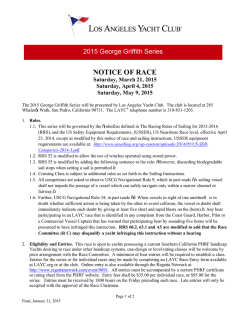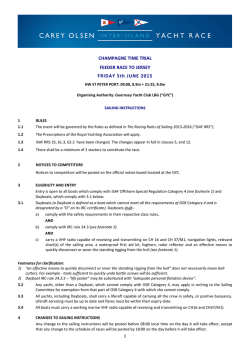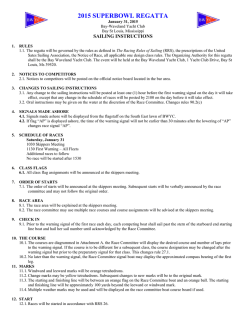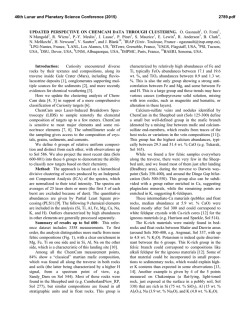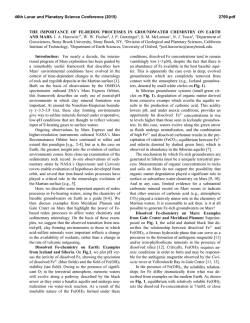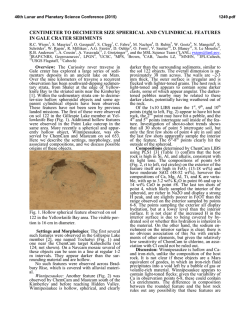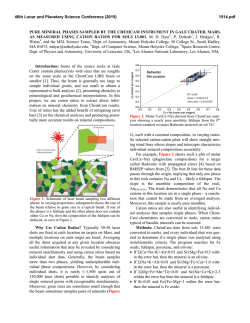
Evidence for Outcrop-Scale Deformation Band Faults on Mars from
46th Lunar and Planetary Science Conference (2015) 2919.pdf EVIDENCE FOR OUTCROP-SCALE DEFORMATION BAND FAULTS ON MARS FROM CURIOSITY ROVER IMAGERY. J.S. Caine1, R.B. Anderson2, K. Herkenhoff2, G.M. Perrett3. 1U.S. Geological Survey (Denver, CO, [email protected]), 2U.S. Geological Survey (Flagstaff, AZ), 3University of Guelph (Ontario, Canada). Introduction. A variety of discontinuities on the surface of Mars have long been recognized as faults1,2,3,4. Orbital imagery has provided evidence of fault-related offsets, discrete linear morphologies, and discolorations along such discontinuities at scales of 10s to 1000s of m. Data from the Curiosity rover show the first outcrop-scale morphological, textural, and chemical evidence for faulting on Mars and indicate that it is similar to that on Earth. Observations. Figures A-F are images of an outcrop in Aeolis Palus acquired by Curiosity on Sol 399, ~1.4 km SW of Bradbury Landing. The images show networks of resistant, raised ridges (RRs) formed in subhorizontally layered conglomeratic sands and silts. There are two sets of RRs distinguished by their subparallel, planar forms (A,B,C). A major set has lengths of a few m and thicknesses of a few cm to ~4 cm. These steeply cut the subhorizontal sediments with ~60º-80º dips to the east and strikes parallel to the view direction of ~N5ºW consistent with shadow asymmetry. One of the major RRs shows an apparent, down to the east offset of a subhorizontal, plate-like bed (B,C). A subsidiary set of RRs has lengths of several cm to dm, is <1 cm in thickness, and tends to form synthetically to and between the major parallel sets. Subsidiary RRs dip ~30º-40º to the east and strike subparallel and slightly oblique to the major RRs and appear to splay from, rather than cut or be cut by, the major RRs (B,D). Mars Hand Lens Imager (MAHLI) mosaics show that the RRs are composed of subangular to subrounded, cm- to sub-mm sized granular materials (D,E,F). The grains occur in poorly sorted, layered trains parallel to the strike of the major and splayed, subsidiary RRs. Individual grains appear compacted with complex but tight, interstitial pore spaces (F). Some grains appear to be cleaved at the RR surfaces. RR surfaces are smooth to globular with weakly formed, subparallel grooves that pitch at low angles in the plane of the surfaces. The surfaces also appear to be cut by open joints. ChemCam major oxide measurements are plotted to compare host materials (HM) with RRs only (G). The variability in the oxide concentrations indicates heterogeneity at the scale of the laser-spot measurements (~300-500 µm) but for every major oxide, the HM and RR ranges are within the 75th to 25th percentiles of one another and most of the median values are similar. Alpha Particle X-ray Spectrometer (APXS) measurements5 on and off the RRs similarly show no significant difference in composition, including values for SO3. Interpretations. The network of RRs found on Sol 399 appear very similar to deformation band (DB) networks found on Earth. DBs are mm thick, curvitabular zones of shear, compaction, and(or) dilation accommodating small displacements on the order of a few mm to a few cm6,7. DBs can form as single structures or as complex clusters with distinctive internal geometry that can attain meter-scale thicknesses, and they are particularly common in high porosity sandstones or poorly lithified sandy sediments8. DBs are sometimes cemented and other times free of cement. They are commonly resistant to erosion, forming ridges standing above their HMs. Veins, or generally unsheared mineral-filled fractures, are commonly associated with faults on Earth, but also form independently. Sol 399 RR geometry is distinctive with thick subparallel bands and thinner subsidiary bands forming between them. These ladder-like structures are kinematically compatible with subhorizontal W-E extension and a possible component of oblique sinistral slip consistent with the left-stepping strands of the major RRs. It is unclear if the grooves on the RR surfaces (E) are related to wind scour or fault slip. The composition and granular textures within the RRs also are consistent with deformation bands rather than veins. ChemCam and APXS data show the composition of the RRs is not significantly different than the HMs and the RRs are not homogeneous. Terrestrial veins and those observed elsewhere in Gale crater9 tend to be compositionally “exotic” compared with their HMs and tend to be relatively homogeneous. Gale crater veins are chracterisitcally Ca-sulfate rich9 whereas the RRs show no evidence for elevated SO3. These data from Sol 399 are consistent with the RRs being deformation bands that entrained surrounding materials with small displacements and little to no cementation. Deformation bands that form in gravel-rich sediments on Earth are rarely reported. Although cataclasis cannot be confirmed, intact gravel and sand are preserved in the Sol 399 DBs. Deformation timing and state of lithification are unknown, but burial could have been up to ~5 km10. The role of tectonic driving forces is also uncertain, but subsidence and compaction are possible mechanisms for the formation of the RR DBs. The low gravity of Mars may also have caused less resistance to compaction and(or) cataclasis aiding in the formation of these coarse-grained DBs, but the current data cannot address this. The observations and interpretations here provide criteria for future data acquisition of fault-related structures important for documenting tectonic, kinematic, and fluid-flow processes on Mars. 46th Lunar and Planetary Science Conference (2015) 2919.pdf
© Copyright 2025
